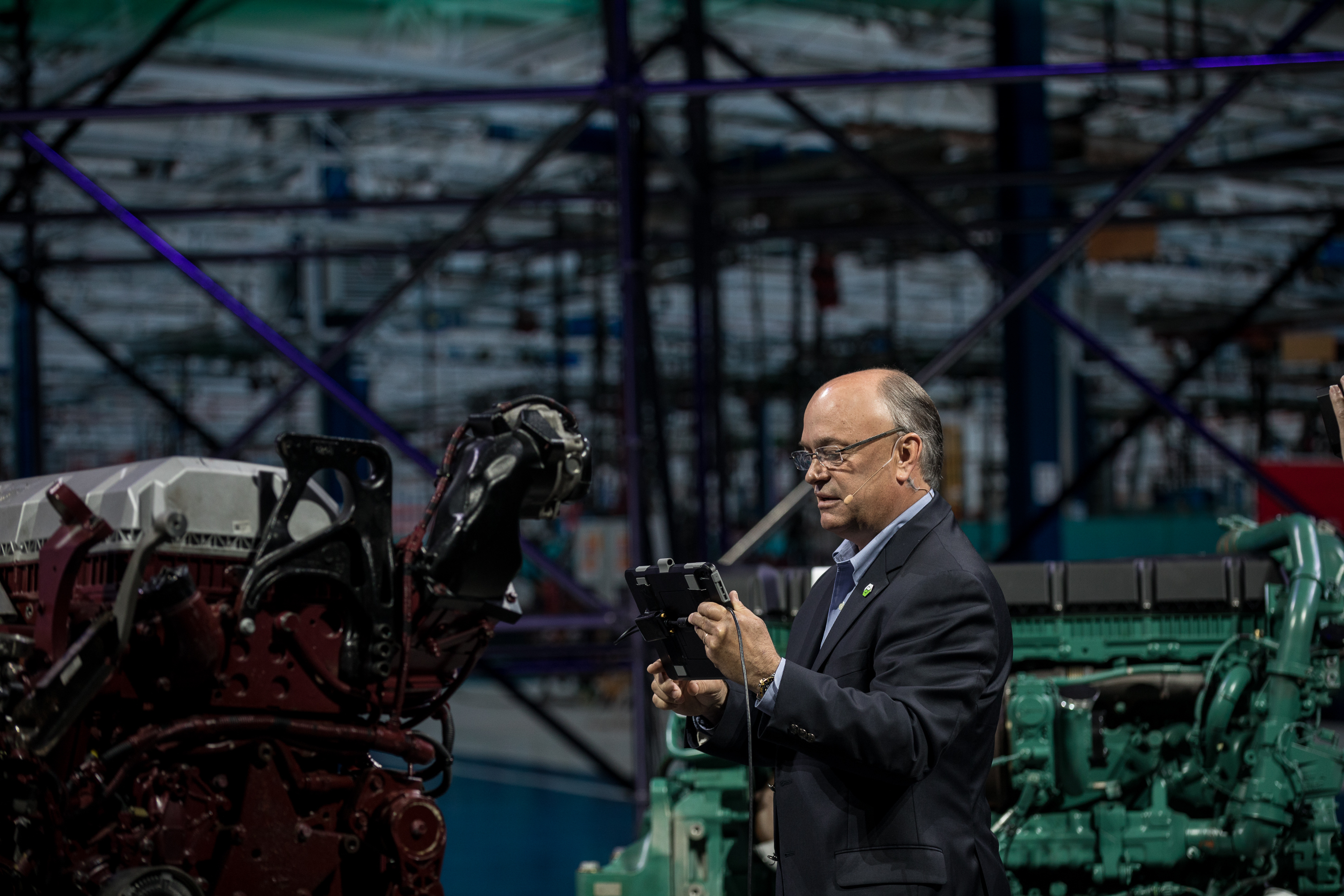What’s Old is New
CAD and PLM are playing a starring role in PTC’s vision for the digitally-connected industrial enterprise.

PTC President Jim Heppelmann showcases how the digital thread is changing the industrial landscape at 2019 LiveWorx. Image courtesy of PTC.
Latest News
June 12, 2019
While PTC’s LiveWorx 2019 (June 11-13, 2019, in Boston) was an extravaganza of flashy robots, space-age AR/VR gear, and the latest in IIoT-connected factory innovation, two unlikely heroes were CAD and PLM, old stalwarts now being revitalized as part of the company’s vision for digital transformation.
“No one is transforming the industrial enterprise without CAD and PLM playing a key role,” said Jim Heppelmann, the company long-time president and CEO during his keynote address. “New technologies like AR/VR, IoT and HPC are intersecting with our heritage and transforming CAD and PLM too.”
For example, Heppelmann said CAD is in a renaissance period of new innovation, pointing to the latest CREO enhancements, including AI-driven generative design and real-time simulation. PTC also showcased how companies like Volvo and Groupe Beneteau are leveraging the Windchill PLM platform to create digital threads that connect previously siloed domains such as engineering, manufacturing and service while helping to facilitate the design and development of highly customized and configurable products.
The focus on its bread and butter products was a notable shift from past LiveWorx conferences where the emphasis was on emerging capabilities like the ThingWorx Internet of Things (IoT) platform. But as companies ramp up digital transformation efforts and look to the digital thread as a way to connect constituencies and promote reuse of information, PLM positioned as a central, one-version-of-the-truth repository, becomes all the more relevant especially as enterprises scale digital workflows beyond engineering.
“PLM is the digital product backbone that understands product configurations across these dimensions of time, customer choice, and business perspective,” Heppelmann said. “You won’t transform much without understanding that.”
PLM is also central to PTC’s vision of a digital twin—the virtual representation of a specific physical product. Hepplemann says the best digital twins have the same DNA and life experiences as their physical counterparts. He drew a parallel between the idea of nature vs. nurture, ascribing the DNA or nature of a digital twin to data stored in the PLM foundation while the nurture aspects or life experiences hail from the telemetry data collected from the physical world through sensors and IIoT. “An accurately configured digital twin is the bridge from IoT to AR,” he said.
PTC made a number of moves to shore up Windchill for its role as the cornerstone of digital transformation. The company expanded its strategic alliance with Microsoft, committing to deliver the PLM platform as Software-as-a-Service (SaaS) offering on Microsoft Azure cloud infrastructure. The move accelerates customers’ effort to expand PLM beyond engineering and product data management, providing standard out-of-the-box PLM functionality and an open architecture that can help reduce deployment costs.
PTC also enhanced Windchill by integrating the software management and systems engineering capabilities garnered through its acquisition of Integrity, allowing engineering organizations to harmonize mechanical, electrical, and now software-related data. Windchill now includes built-in linking and tracing between its native PDM capabilities and system engineering, requirements management, source code management, and testing. As a result, product designers gain a comprehensive view, helping them identify dependencies, view design progress, and understand improvements and exceptions.
For additional insights into the significance of integrating software and requirements management along with system engineering capabilities into Windchill, watch this video.
More PTC Coverage
Subscribe to our FREE magazine, FREE email newsletters or both!
Latest News
About the Author
Beth Stackpole is a contributing editor to Digital Engineering. Send e-mail about this article to [email protected].
Follow DE






